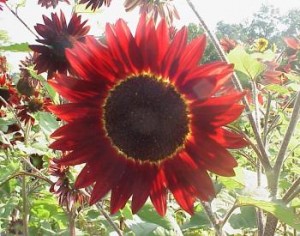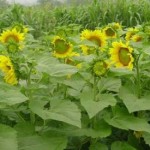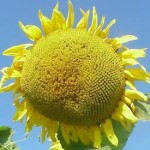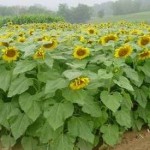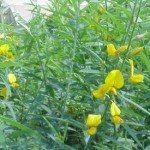Crop Maze Research and Education
go.ncsu.edu/readext?435417
en Español / em Português
El inglés es el idioma de control de esta página. En la medida en que haya algún conflicto entre la traducción al inglés y la traducción, el inglés prevalece.
Al hacer clic en el enlace de traducción se activa un servicio de traducción gratuito para convertir la página al español. Al igual que con cualquier traducción por Internet, la conversión no es sensible al contexto y puede que no traduzca el texto en su significado original. NC State Extension no garantiza la exactitud del texto traducido. Por favor, tenga en cuenta que algunas aplicaciones y/o servicios pueden no funcionar como se espera cuando se traducen.
Português
Inglês é o idioma de controle desta página. Na medida que haja algum conflito entre o texto original em Inglês e a tradução, o Inglês prevalece.
Ao clicar no link de tradução, um serviço gratuito de tradução será ativado para converter a página para o Português. Como em qualquer tradução pela internet, a conversão não é sensivel ao contexto e pode não ocorrer a tradução para o significado orginal. O serviço de Extensão da Carolina do Norte (NC State Extension) não garante a exatidão do texto traduzido. Por favor, observe que algumas funções ou serviços podem não funcionar como esperado após a tradução.
English
English is the controlling language of this page. To the extent there is any conflict between the English text and the translation, English controls.
Clicking on the translation link activates a free translation service to convert the page to Spanish. As with any Internet translation, the conversion is not context-sensitive and may not translate the text to its original meaning. NC State Extension does not guarantee the accuracy of the translated text. Please note that some applications and/or services may not function as expected when translated.
Collapse ▲A Project of the NC Specialty Crops Program
Jeanine Davis and Lanny Hass
August 23, 2001
Reviewed by Jeanine Davis, NC Alternative Crops and Organics Program, Department of Horticultural Science, NC State University on 5/3/2022.
In an effort to find innovative new ways to keep agriculture in North Carolina profitable, NC State University has been involved in developing a variety of agri-tourism efforts. One of the most successful of these enterprises has been cornfield mazes. A cornfield maze is a field of corn, usually 6-8 acres, into which has been carved an intricate design. People pay an admission charge for the opportunity to walk through the maze. Some mazes are educational, some are just fun, some are “haunted” for Halloween. Cornfield mazes are popular with families, church youth groups, school groups, and youth camp and daycare programs. Several local North Carolina mazes are highlighted at The Maze.
To build on the success of the cornfield mazes, we are interested in trying to build mazes of other agricultural crops. An apple grower in Alexander County wanted to build a sunflower maze. Working with the NC Specialty Crops Program and his county extension agent, in 2001 this grower established a sunflower maze on his farm. Since this was the first of its type in the state, we had many questions about how to do it. For example, what variety of sunflower should we use? How far apart should we plant the sunflowers? When should the sunflower seeds be sown? To help answer some of these questions, we conducted a study.
2001 Sunflower Study
Objectives
- To determine if sunflowers are suitable for use in agricultural crop mazes.
- To determine the optimum planting density and sunflower type for a maze.
- To determine if sunhemp planted within the sunflowers would improve foliage density necessary for a maze.
How experiment was conducted
Two sunflower types, an oil type, Pioneer Hybrid P63A81 and a confectionary type, Pioneer Hybrid 6946, were planted at three densities (25,000, 30,000, and 35,000 seeds per acre). The oil seed type, planted at the three densities, was also intercropped with sunhemp from Peaceful Valley Farm Supply at a single density of 20 lbs/acre. Seeds were sown on June 16, 2001. There were four replications.
Data collected
Data were collected on seedling emergence, plant height, leaf size, uniformity, and foliage density. For a maze, plant foliage needs to be dense enough to obscure viewing from one path to the next. In this study we measured this by inserting a large card with red, white, and blue bands into the foliage at 5′, 10′ and 15′ from the path. An observer in the path indicated how much of the card could be seen at each distance.
Result
- There was no difference in the germination percentages between the oil and confectionary seed varieties. The average was 78% germination.
- Germination decreased with increasing plant populations.
- The sunflower seeds were very sensitive to compaction in the soil. We do not recommend seeding in three directions to obtain high plant populations because the seeds got pushed down in to the soil by the tractor tires and had difficulty pushing to the surface.
- The optimum plant population was 30,000 plants per acre.
- The sunhemp interplanted with the sunflowers made it much harder to see between the leaves of the sunflowers. This made for denser “walls” in the maze but was “messy looking.”
- Sunflower is susceptible to a number of diseases which quickly make the plants unsightly. Bacterial stem rot (Erwinia) was a problem in some of our plots.
- Bees really like sunflowers! This might be a problem with the public.
- Flower heads were huge and dropped over very early in the season.
- Plants were tall enough for a maze but foliage deteriorated early.
Conclusion
The sunflowers drew lots of attention. People loved them and had to stop and look at them. The oil and confectionary varieties are bred to produce large heads full of seeds. As a result, these heads drooped over very soon after full bloom. This would not be particularly attractive in a maze. But the sunflowers attracted hundreds of birds which could be used as a marketing advantage. The heads can also be cut and sold as natural bird feeders. Foliage does not stay attractive for long. Life of maze would only be a few weeks.
2002 Sunflower Study
Project Leaders: Jeanine Davis, Lanny Hass, and Rob Hawk
Technicians: George Cox, Susan Bryson, and Karen Hardy
Field Prep and Maintenance: Mountain Horticultural Crops Research Station Staff
In 2002 we eliminated the sunflower sunhemp treatment and added a cover crop variety of sunflowers: Sun3703 from Johnny’s Selected Seeds. The oil, confectionary, and cover crop varieties of sunflowers were all planted at 25,000, 30,000, and 35,000 plants per acre. There were 4 replicants. Seeds were sown on July 23, 2002.
Data collected
Data were collected on seedling emergence, plant height, leaf size, uniformity, and foliage density. For a maze, plant foliage needs to be dense enough to obscure viewing from one path to the next. In this study we measured this by inserting a large card with red, white, and blue bands into the foliage at 5′, 10′ and 15′ from the path. An observer in the path indicated how much of the card could be seen at each distance.
Results
- All varieties germinated well.
- Flowers began opening in early September.
- Plants were all short, about 5-5 1/2 feet tall.
- On September 27, a tropical storm with torrential rains and high winds knocked down all the sunflowers.
Conclusion
We planted the sunflowers in late July to see if we could have an attractive maze in the fall when maze activity is the greatest. Because of the day-length sensitivity of the varieties used, the plants quit growing when they were about 5 feet tall – not tall enough for a maze. Bloom was unaffected, however. The cover crop variety had a much smaller head than the other varieties and remained upright until the storm took it down. We noted that local cornfields were not destroyed by the storm showing the sunflowers are more sensitive to wind and rain.
2002 Sorghum Study
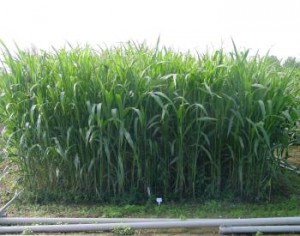 Project Leader: Jeanine Davis
Project Leader: Jeanine Davis
Technicians: George Cox and Karen Hardy
Field Prep and Maintenance: Mountain Horticultural Crops Research Station Staff
Sorghum was tried as a new maze plant. The variety, 4Ever Green from Walter Moss Seed Company, was planted at a rate of 35 lbs/acre. Three seeding methods were used. Broadcast, drilled one direction, and drilled in two directions. There were four replications. Seeding took place on June 18, 2002.
Results
- Sorghum grew very well. It was tall and very dense.
- On September 27th a tropical storm with torrential rains and high winds knocked all the sorghum flat.
Conclusion
Until the storm arrived the sorghum showed great promise as a maze crop. We will try this again, reducing the plant density to see if the plants will develop stronger root systems and stems.



